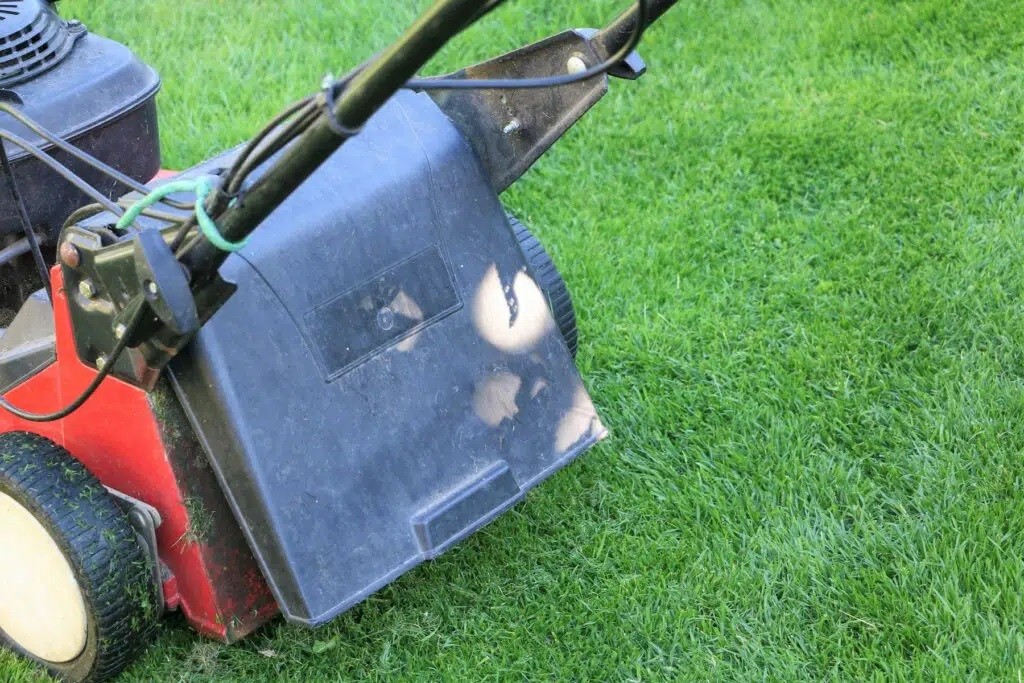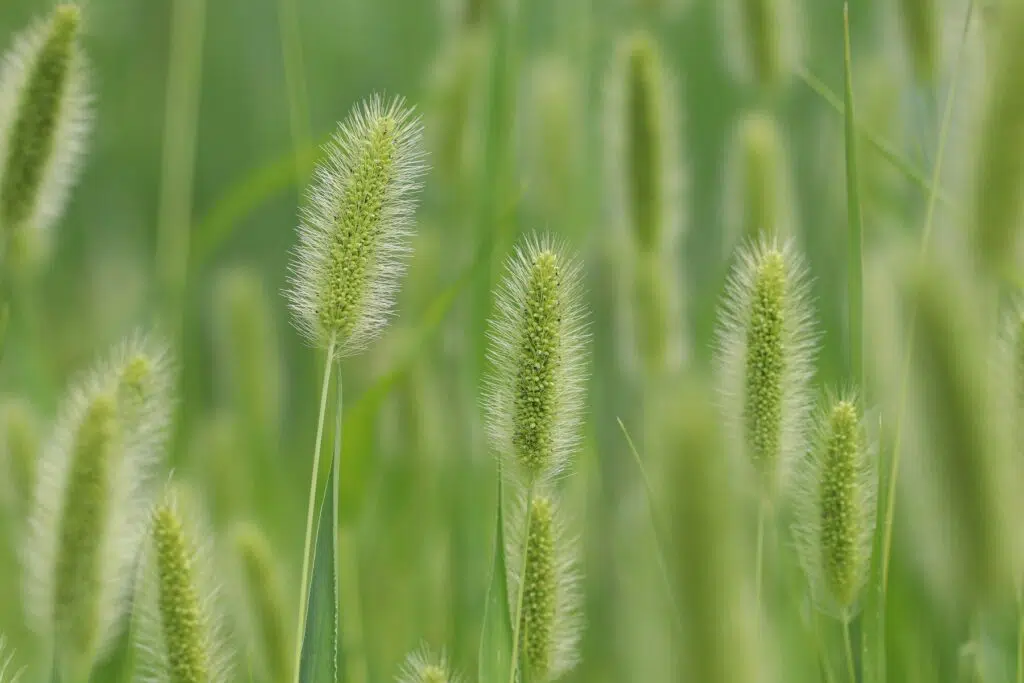Thick tufts of grass in the lawn are not only an aesthetic problem, foreign grass can cause lasting damage to the surrounding lawn. There are different ways to remove foreign grass and prevent the thick tufts of grass.
Contents
- 1 Different types
- 2 Extraneous grass in new lawns
- 3 Choose appropriate seed
- 4 Remove extraneous grass
- 5 Mowing against foreign grass
- 6 Correct dethatching
- 7 Care for prevention
- 8 Frequently asked questions
- 9 Is there extraneous grass with sod as well?
- 10 How can weed emergence be prevented in new plantings?
- 11 Author
Different types
Foreign grasses are usually always the same species. They are spread by birds or the wind. In addition, open areas in the lawn or a poorly maintained lawn favor the establishment of alien grass.
The most common species that appear as thick tufts of grass in the lawn include:
- Blood millet (Digitaria sanguinalis).
- Bristle millet (Setaria viridis)
- Annual meadow grass (Poa annua)
- Chicken millet (Echinochloa crus-galli)
- White bunchgrass (Agrostis stolonifera)
Among grass species used for lawns, millet species in particular are much faster growing. Due to the fact that many species can form roots on the internodes (the leafless section of a shoot axis between two nodes) of foreign grasses, some species tend to spread flat initially before the blades grow tall.
Spreading growth crowds out the turf and the grass often dies in this area because light and nutrients are not available in sufficient quantities.
Extraneous grass in new lawns
If you are establishing a new lawn, extraneous grass is almost inevitable. Even with careful preparation, seed establishment of foreign grass varieties will occur.
In order to have as little foreign grass in the lawn as possible, the right procedure is essential for new installations. Here’s how to properly establish new turf:
- Remove sod to a depth of at least 15 cm
- Level the area
- allow to set for two days
- Level the area
- Remove weeds, roots and stones to a depth of 3 cm again
- distribute seed evenly
- work in lightly with rake
- press down with roller

Once the lawn is seeded, the first four weeks must be watered regularly. After a month, the lawn is mowed and fertilized for the first time. If problematic foreign grass has established itself in large areas, you should reseed these areas once again.
Note: Removing the old sod will remove many weeds and foreign grasses. Remove the sod very deeply, then if necessary, fill it back in with soil, such as directly from the composting plant, which is usually free of weeds
Choose appropriate seed
Sports and recreational turf is the most common turf mixture sold, but it is not suitable for every garden or location. This turf mixture is at a distinct disadvantage, especially in shady areas, which is why annual bluegrass in particular has an easy time there.
In the shade, it is also moist, which is also ideal for the meadow grass. If a robotic lawnmower or a mulching mower is used, many seeds are left behind, which also promotes the spread of bluegrass.
Tip: If large gaps appear in the lawn after removal, fill them up again with lawn seed.
Remove extraneous grass
The easiest way to get rid of extraneous grass is to pull it out. There are practical weed cutters for lawns that can be used to remove extraneous grass selectively. Especially in the case of grass species that form roots on the internodes, be sure to remove the side shoots completely.
Mowing against foreign grass
How effective mowing can be against foreign grass is often underestimated. Trim the lawn at regular intervals. By doing this, you can also prevent foreign grass from spreading rapidly. Advantages of mowing are:
- promotes growth of the lawn
- foreign grass does not form seeds
- seeds are sucked into the catcher bag
- weakens foreign grass
Efficient is regular mowing, for example, millet species. They are usually annuals, and if the formation of new seeds is prevented, they are usually not found in the lawn the next year with proper care.

Note: When mowing, the lowest level is not always the best choice, as it also allows a lot of light to reach the ground, favoring germination in foreign grass. For sports and recreational turf, the optimal height is 3 to 4 inches
Correct dethatching
Mistakes are often made when dethatching when there are thick tufts of grass in the lawn. While dethatching does benefit the lawn, it can also encourage the formation of extraneous grass if dethatched at the wrong time or on the wrong grass.
In principle, dethatching is possible throughout the season. However, if there are millet species or white ostrich grass in the lawn, dethatching promotes their spread.
Tip: If you are unsure of the variety of foreign grass, limit scarifying to the spring
Care for prevention
The best way to prevent extraneous grass in your lawn is to care for it properly. It’s especially important to avoid bare patches, as that’s where foreign grass likes to grow. In addition to mowing and dethatching, you should follow these maintenance tips:
- reseed in the spring after scarifying
- use suitable lawn fertilizer
- water regularly during prolonged drought
- remove lawn thatch and leaves in autumn
Frequently asked questions
Is there extraneous grass with sod as well?
As a rule, turf is free of extraneous grass when it is laid. Over the years, however, foreign grass can also spread in the lawn and thus displace the turf, unless the lawn is extensively maintained.
How can weed emergence be prevented in new plantings?
It is not possible to completely prevent the germination of extraneous grass or weeds in new lawns, unless turf is used. One way to decimate foreign grass is to create so-called false lawns. In this case, the area is prepared, but instead of sowing, you let the weeds germinate. Then you cover the area with a fleece or foil, which causes the sprouted weeds to die back. Only then sow the lawn seed.


